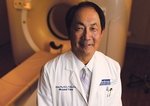health
Neurologists warn of prescribing stimulants to youths seeking better grades
■ The AAN says the boost in cognitive function comes at a steep price: a greater risk of cardiovascular problems and addiction.
By Christine S. Moyer amednews staff — Posted March 18, 2013
- WITH THIS STORY:
- » External links
- » Related content
At a time when many youths are taking medications to help them focus or enhance their memories, the American Academy of Neurology is urging doctors not to write children and adolescents prescriptions for neuroenhancement.
Neuroenhancement is defined as the use of prescription medication by healthy people for the purpose of augmenting normal cognitive or affective function, the AAN said. The academy issued the guidance in a position paper published online March 13 in Neurology.
This is the AAN's first guidance statement on neuroenhancement in children. In 2009, it issued a report on the subject among adults.
In writing the position paper, the AAN's Ethics, Law and Humanities Committee reviewed hundreds of studies on the topic. The committee identified key medical concerns with youths using stimulants to enhance cognitive function, including possible increased risk of cardiovascular problems and issues in the central nervous system. There also is concern that nontherapeutic use of high doses of a stimulant could lead to addiction to the substance.
“These drugs are being prescribed a lot, and they're being sold on the street a lot,” said William D. Graf, MD, the paper's lead author. “They're available, and everyone knows about it.”
People who use stimulants to boost cognitive function often buy the substances from someone they know, said Dr. Graf, a pediatric neurologist at Yale-New Haven Children's Hospital in Connecticut. He also is a professor of pediatrics and neurology at Yale School of Medicine.
In some cases, patients feign symptoms of attention-deficit/hyperactivity disorder and the doctor prescribes them a stimulant, such as Adderall (amphetamine/dextroamphetamine), Dr. Graf said. Less frequently, physicians give in to a young patient's request for a stimulant to help them study or pay closer attention in school, he said.
“Doctors caring for children and teens have a professional obligation to always protect the best interests of the child, to protect vulnerable populations and prevent the misuse of medication,” Dr. Graf said. “The practice of prescribing these drugs, called neuroenhancements, for healthy [patients] is not justifiable.”
Social issues root of problem?
There are no clear data on how widespread neuroenhancement is among youths. But the AAN said the problem probably is contributing to the increase in physician office visits for ADHD management and prescriptions for stimulants and psychotropic medications in children during the past two decades.
The prevalence of parent-reported ADHD among children climbed from 7.8% in 2003 to 9.5% in 2007, according to Centers for Disease Control and Prevention data. The findings were published in the Nov. 12, 2010, issue of the CDC's Morbidity and Mortality Weekly Report.
Among children with ADHD, 66.3% were taking medication for the condition, the CDC said.
DID YOU KNOW:
Stimulant use can increase patients' risk of cardiovascular problems, central nervous system issues and addiction.
Dr. Graf said the AAN is not questioning whether ADHD exists. “But the numbers are so high that the possibility that some overdiagnosis and overtreatment is going on is probable,” he said.
A separate study, “Monitoring the Future,” found that nonmedical use of stimulants is relatively common among adolescents. For instance, nonmedical use of methylphenidate in the past year was reported by 1.6% of eighth graders, 2.9% of 10th graders and 3.4% of 12th graders, according to 2008 data. Researchers with the Monitoring the Future study examine the behaviors, attitudes and values of about 50,000 eighth-, 10th- and 12th-grade students each year.
When participants were asked what amphetamines they took during the last year without a doctor's order, 2.8% of 12th graders reported use of Adderall.
“Overall, it is generally acknowledged that some proportion of nonmedical stimulant drug use is for neuroenhancement (as opposed to 'recreational' substance abuse),” the AAN position paper said.
When a physician receives a request for a stimulant prescription from a young patient or the youth's parents, he or she should consider the possibility that medical and social issues are at the root of the problem, the AAN said. Such issues could include academic pressures, bullying and depression.
The AAN encourages physicians to ask patients open-ended questions about what might be bothering them and inquire about their talents and weaknesses. Doing so helps the doctor get a better idea of what is going on in the individual's life, Dr. Graf said.
The academy also recommends that doctors ask parents about their expectations of the requested medication.
When stimulants are clinically warranted, physicians should try to prevent diversion of the medication by advising patients that they should not let anyone else take their pills, according to the AAN.
If the patient is healthy, however, doctors should emphasize nonmedication alternatives, such as adequate sleep, a balanced diet, exercise, and improved study habits or tutoring, the AAN said.
“Most doctors feel they're supposed to be treating sick children,” Dr. Graf said. “They don't see their role as dispensing medicine to healthy patients.”
 Subscribe to Email Alert
Subscribe to Email Alert








